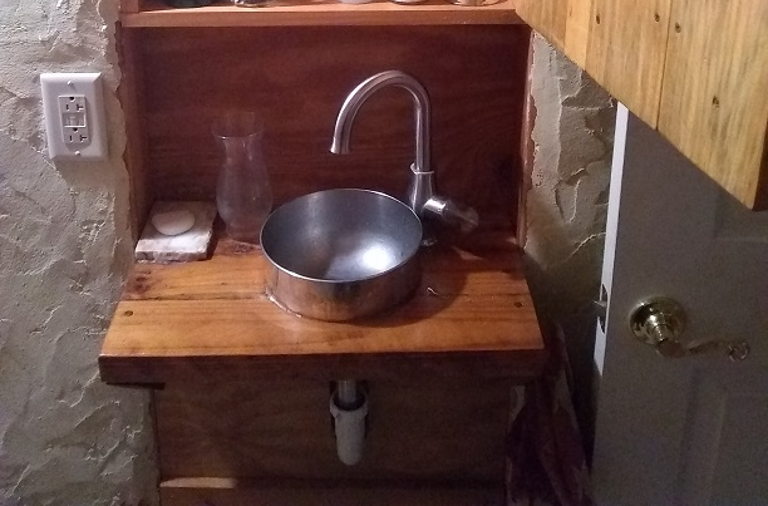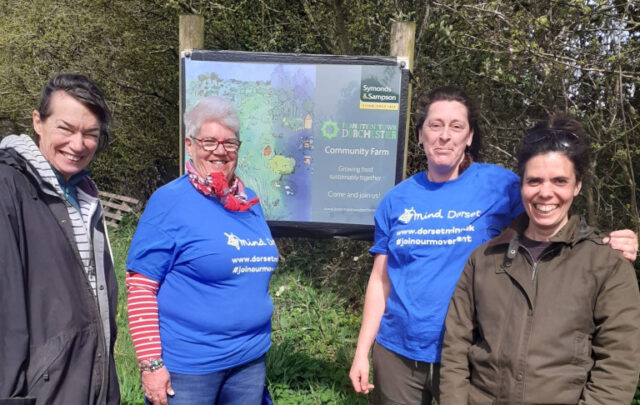First, I want to let you know I have a guest post about how we cook off grid on The Organic Prepper. Preparedness has gotten a bad name lately, but I think it’s only sensible to plan for common emergencies such as an electrical outage or a job loss. I like The Organic Prepper because they understand and care about modern food issues, and they take pains to collect stories from real people who have been through real disasters, like the Bosnian war and the recent troubles in Venezuela. If you’re interested in cooking off grid, check it out.
We built our little house using light straw clay and lots of reclaimed wood, which both saved us money and reduced the environmental impact of building. Alternative materials alone don’t make a house green, though, because even the eco-friendliest house is still far more impactful than it has to be if it is bigger than it has to be. And if you’re building with your hands or serving as your own general contractor, I can guarantee the best thing for your soul and budget is to make the house as small as you comfortably can.
Here’s a personal confession: I’ve got project stamina you wouldn’t believe. I work on and think about nothing else until the project is done. Only now in my mid-30s am I learning to abandon a plan when it becomes apparent it’s a bad one, rather than relentlessly carrying it through because it’s THE PLAN. My kind husband calls this “over-focus,” when the more accurate term is “obsession.” Even though I was very thoroughly obsessed, I was so done physically and emotionally long before we finished our little bitty house. At the time, I dearly wished I’d made it smaller.
How small is it? My husband and I and our two kids live very happily in 725 square feet. It’s not within the tiny house limit of 400 square feet, but then again most tiny house dwellers are singles or couples. We have three bedrooms, a toilet/utility room, a shower room and a main room which serves as the kitchen, dining, homeschool and lounging space. Our house is under a third the size of the average new American house. It’s smaller than an average American apartment. But let’s be real: it’s a fantastically spacious and comfortable size in global and historical terms.
Whether you’re building or buying, the benefits of living smaller are many and spectacular, while I personally find the drawbacks to be minor and few.

Our bathroom sink with cabinet above. This is a good example of a small storage space that works great because it contains only the bathroom stuff that gets used every single day. The back of the cabinet opens to the shower room, so the essentials are accessible even if one of the rooms is in use.
Pro #1: Smaller houses are far, far less expensive.
Realtors encourage people to buy as much house as they can “afford,” and lots of people take that terrible advice. This is why the American house has ballooned from 1,400 square feet in 1910 to 2,430 today, while family size has shrunk from 4.5 to 2.6. An average new house has a $300,000 price tag. With a 4% interest rate on a 30-year mortgage and a 10% down payment, it ends up costing $494,000. Does that sound like something you can actually afford and want to pay? Maybe so, but then again maybe not.
The purchase price of our land was $90,000 for 17 acres with six damaged structures to demolish and about five tons of scattered trash. We had a $30,000 down payment, and we were extremely lucky to get a private loan which will be paid off in under ten years from purchase. We also had $35,000 for materials and labor at the start. I hoped the build might take nine months. In the end our build cost just over $43,000 (I tracked every expense, down to the last screw). We earned the difference as we built to finish the project in 17 months, with a couple thousand still in the bank.
Reality check: just 20% over-budget and eight months past due is really good for first-time builders.
We had that down payment and materials money because we were privileged to save for the short time we were dual income/no kids, which we accomplished partly by, wait for it: living small. It also helped that we had only one set of student loans, and we were strongly committed to each other and to our shared goals. I’m fully aware hardly anybody starts their house-buying journey with that much in financial and emotional assets, which makes it even more important to consider living smaller. Smaller houses are cheaper and easier to maintain, insure, heat, cool, renovate and furnish.
If you think of your money as the distillation of your precious time on Earth, it pays to carefully consider how much of that time you want to trade for more house. It may mean the difference between being able to take vacations, or not. A comfortable retirement, or none. Giving your kids opportunities, or telling them no. Choosing a job you love, or needing to choose based on salary. These are the most important choices we make.
Con #1: Exactly where and how everything is stored is much more critical.
But actually, maybe this is a pro, because everywhere I lived before had really ample storage, and I made a mess of it all. No more! We have no closets in our little house, because closets are where possessions go to die. They’re like landfills you keep inside.
Instead we have some under-bed storage for large things, one built-in shelf in the main room and another in the hall, a shoe shelf and a utility shelf, some kitchen cabinets, dressers for the kids and wardrobes for the adults. Garage-type stuff is stored in the barn. Not all of these spaces are full.

Believe it or not, these wardrobes represent a significant increase in storage space for us. For about five years my husband and I shared a dresser, and not every house we lived in had a convenient place to hang things. Storage space that works perfectly for you may not look like a standard closet, and that’s okay.
We moved in before the wardrobes and most of the shelving were finished, which made dealing with possessions inconvenient for a while. In a little house you can’t just push it all into the spare room and shut the door, so I was quite motivated to finish building the critical pieces immediately. Others, like the shoe and utility shelves, just got finished last week even though we’ve been living here over two years. I needed to be in the space for a while before I understood exactly what we needed.
How many kitchens have you seen where the owner complains of too little counter space, but there is actually huge counter space all filled with things, so there’s nowhere to set anything down? Paradoxically, I find that having a small amount of carefully planned kitchen counter space is actually much more convenient than having acres of counter. My spaces need to match my ability to maintain them, and it’s much easier to keep a small amount of counter clear.
This amount of household storage space fits in my head, so I always know where pretty much everything is. (Except for whatever hammer or drill I just had in my hand a minute ago. That may never be seen again.) We’re not exactly minimalists. We have a LOT of books and quite a stockpile of certain consumables, but we strive to own only what we use and love, and not waste our money or time on things we don’t. Reforming our relationship with stuff was an essential step for us. A lot of that reformation had to take place before we transitioned to living smaller, but it is also an ongoing process.
Pro #2: Smaller houses require much less cleaning and organizing.
I am not the world’s best housekeeper. I would much rather garden, hang out with the chickens or adventure with the kids down by the river. But I choose to do most of the cleaning so my husband can spend his spare time with the kids. I do like things to be clean and I get pretty irritated if they’re not, which is why it’s awesome that a full floor cleaning of my little house takes only half an hour.
After we’d been living here for a year, I remarked to my husband that I’d thought I would spend just as much time cleaning as I did in larger houses, and in the smaller space this would result in sparkling cleanliness. But in reality I just spent less time cleaning, ending up with the same old level of cleanliness. I felt disappointed that my behavior wasn’t matching my expectations.
His response was: “Have you met you?”
He was entirely right. Of course I don’t spend a minute more on cleaning than absolutely necessary to meet my minimum comfort level. Moving to a smaller house bought me more time outside doing things I love, and that is completely worth it.
Con #2: There isn’t space for a 16-seat table.
Many people think they need a large area to host friends and family. I think having large hosting spaces is more about displaying wealth than it is about hosting comfortably. We have plenty of space for parties on the patio with its summer kitchen, during the seasons when it’s most fun to host. Also, our open-plan main room affords a flexibility few regular-sized houses can boast.
I’ve had Thanksgivings and birthday parties in our little house, and I once agreed to let my husband’s entire class of university students tramp through on a field trip. The bottom line is that while it’s not going to get us into any glossy magazine, our hosting space is quite adequate for us.
Pro #3: A small, thoughtfully organized house can allow better parenting.
This is of course an even more personal, subjective pro, in a list of personal subjective pros. Parenting is stressful, and different parents need different amounts of physical separation to keep their cool. For me, though, things got a lot better when we moved to the little house (and not just because we were no longer building a house with toddlers).
Every house I lived in before had divided living and kitchen space. There was no safe place I could see my toddlers playing while I cooked, so I couldn’t really let them work on their problems but also intervene at the right moment to prevent disagreements from escalating into eye damage. Parents, you know how serious this is in the witching hour right before dinner. With the combined space I’m able to parent much better, which is less critical but still important now that they’re 4 and 7.
As they age they play more in their own rooms, usually together. Because they’re not off in some upstairs corner, I can still get there at the right moment when necessary. Their rooms are 7ft by 10ft, which has proven perfectly adequate for playing and sleepovers. When our friends brought their two kids to stay we gave the parents and baby our master bedroom, my husband and I slept in my daughter’s room and the three older kids slept in my son’s room. It was cozy and perfectly comfortable.
Someday I’ll have teenagers who need their own space. I’m really looking forward to that because designing and building a small structure for oneself is a spectacular educational and personal-growth opportunity. My kids are already drawing their floor plans and contemplating where to place their tiny houses on our land. Maybe they’ll put it on wheels and take it with them when they go, or maybe I’ll rent the space to vacationers. Maybe they’ll need to come back for a while, as many adult children do these days, and there will already be a space ready for them.
Con #3: No dedicated solitary confinement *a-hem* I mean office space.
My husband would prefer a separate space to work from home, away from children who loooove him and want to taaaalk to him. Currently he uses our bedroom, setting his laptop on my treadle sewing machine. I keep offering to build him a desk but the problem isn’t really the desk. The problem is the mental space to hear himself think, for which his ideal distance from our kids is probably 300 feet, soundproof walls and a scotch or maybe two.
This is an individual preference, of course, and depends on the kind of work you do at home. Every word of mine you read was written while I also answered questions about frogs, helped with subtraction and mm-hmmed though long screeds about Minecraft. That usually works fine for me.
In the end our living choices matter deeply for our own financial, physical and mental health, and for the health of the world. A typical-sized new house might emit as much as 50 tons of carbon dioxide just in the construction phase, before you even step over the threshold, while renovating a house to be energy efficient emits just 15 tons. Staying put is by far the most eco-friendly option, even if you have to do some serious renovations. We might have gone that route, if there had been a structure on our much-loved land that could have been made sound and resilient in the face of the oncoming global changes. But there wasn’t.
If you’re building, read up on alternative techniques that are less harmful, and really think through your design. Ianto Evans’ Hand Sculpted House is a fantastic resource for thinking differently about housing, with lots of surprising revelations and beautiful pictures. I took Ianto’s workshop in Oregon. It was an essential part of my education and preparation for building, even though we didn’t end up using cob.
If you’re buying, carefully consider what you need and how much you really want to pay, given that you’re paying with a significant chunk of your life. A few simple changes could turn a smaller, less-expensive structure into a near-perfect fit. For instance, I know of one family who gave their four daughters the master bedroom. I’ve lived in two houses where the master was so large and awkwardly-proportioned it could be divided into two smaller, more useful rooms for about $200 and a couple days’ work. You might live in part of a big house and share the rest with friends or family, which is an arrangement with many benefits, if it suits you.
Your living space might end up looking different from the norm. Well, fine! It’s yours, and it should suit you like a good pair of shoes. Many of us who came of age during the housing crisis or afterward no longer buy the lie that housing is an investment, because we saw how easy it is to get screwed if we have to sell at the wrong time. There will only be more wrong times as the world gets hotter and less certain.
I hope to be lucky enough to die in my little house and be buried in the field (which is legal in my county), but if I have to leave, the value of the house will be the years I lived well in it, not any money I happened to make on it.
Don’t forget to tell us in the comments if you have ever downsized, decluttered or seriously rearranged your space. How did it impact your life?






